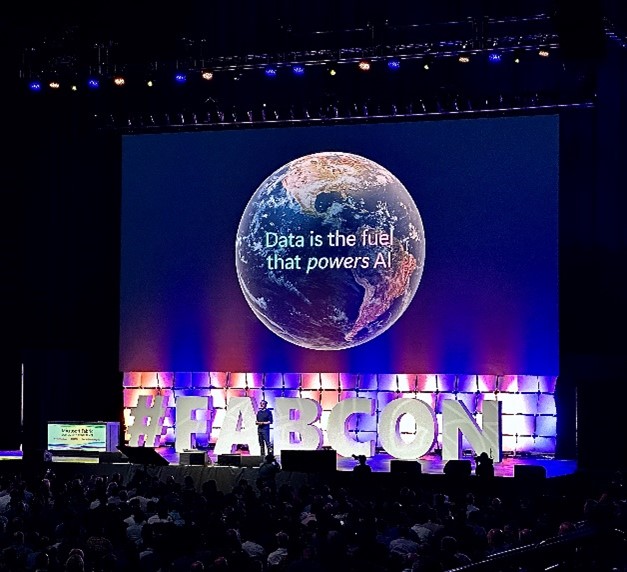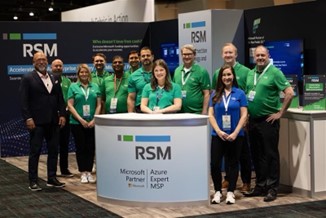4 key takeaways for data and business leaders
1. Fabric’s growth Is exploding—and strategic
Microsoft Fabric has rapidly become a cornerstone of enterprise data architecture. It’s now used by over 19,000 organizations, including 74% of the Fortune 500, and has seen 360% year-over-year growth in active users.
The scale is remarkable:
- 705 trillion rows processed monthly
- 430 PB of data transferred each month
- 5.1 billion real-time queries daily
- 19.2 trillion streaming events processed monthly
This level of adoption signals a clear and rapid shift: organizations are standardizing on unified analytics to prepare for the AI era.
2. AI Is integrated at every level
A key announcement at FabCon 2025 was the expansion of Copilot in Fabric to all paid SKUs, democratizing access to AI-powered insights across the enterprise. Users can now leverage Copilot to generate DAX code, identify anomalies and ask natural language questions within tools like Power BI, drawing insights directly from Fabric’s unified data and surfacing them through interactive visualizations.
In addition, Microsoft introduced data agents, AI assistants that navigate enterprise datasets to deliver real-time, contextual insights. These agents now integrate with Azure AI Foundry and Microsoft 365 Copilot, enabling data-driven conversations in Teams, Outlook and other familiar tools.
The message was clear: Teams that activate these features early will gain speed, insight and a meaningful productivity edge.
3. Power BI at 10: Still the data decision engine
Power BI marks its 10th anniversary in 2025 by reaffirming its role as the bridge between data and business action. With Fabric-native features like Direct Lake, Power BI now delivers near-instant analytics without data imports, bringing even faster performance to enterprise-scale BI.
“Power BI is incredibly important to customers and incredibly important to Microsoft … and it’s only gone up since Fabric launched.” — Arun Ulagaratchagan, Corporate Vice President, Azure Data; FabCon Keynote Speaker
Power BI continues to be the interface where unified data, AI and business decisions meet.
4. Embrace the tension between AI and data security
As AI usage accelerates, so does the need for strong, flexible governance. One theme echoed throughout the conference: organizations must manage the tension between enabling rapid innovation and maintaining control.
Fabric’s OneLake Security addresses this balance by allowing teams to set data access and protection policies once—automatically enforced across all analytics tools. This simplifies compliance and reduces risk while preserving agility.
Additionally, enterprise-wide governance with Microsoft Purview can be layered on for cross-platform data discovery, classification and compliance management, ensuring consistent oversight beyond Fabric.
The takeaway: AI and data security can evolve together, without compromise.



